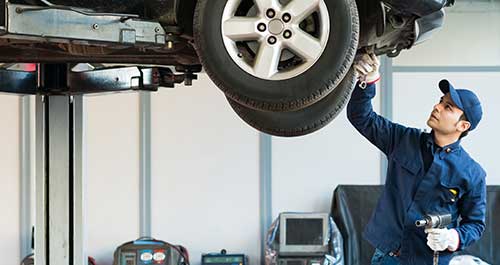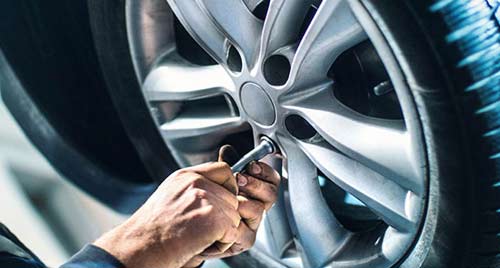Your suspension system works hard, to ensure driving comfort by smoothing out the bumps in the road and providing traction by keeping the wheels on the ground as much as possible.
But how can you tell if something is wrong with your suspension? Here are some common signs of suspension problems.
Pulling to one side when driving
If you notice your car is pulling to one side or the other while you’re driving, the problem lies with your tyres, your shock absorbers or your brakes.
Tyres need to be precisely aligned (i.e. camber, caster and toe in) to ensure a smooth ride. Take a look at your tyre treads to see if they are wearing evenly, and check that the tyres are correctly inflated, as over- or under-inflated tyres can impact your stability while driving.
If the problem continues after you have checked your tyres, take a look at your suspension system. Can you spot any signs of wear or damage on your shock absorbers, ball joints or control arms? If you’re not sure what you’re looking for, it’s best to talk to a qualified mechanic as suspension problems can have serious safety implications.
Feeling every bump
One of the main roles of the suspension system is to smooth out the bumps on the road. If you start to feel every bump on the road, it’s a clear sign that there is a problem with your shock absorbers or struts, that needs to be checked.
An easy check is the bounce test. Simply push your entire weight down on your car’s bonnet. Release and count the number of times the car bounces. If it bounces more than three times, then there is a problem with your shock absorbers or struts.
An alternative test depends on whether your car has shock absorbers or struts. If your car has shock absorbers, look for leaks of the fluid that helps dampen the bouncing. And if your car has struts, listen for a knocking sound when you drive over bumps.
One corner sits low
If you notice that one corner of your car seems to be a lot lower than the others, there’s a good chance you have a worn or damaged spring. You may also notice a clunking noise as you drive over bumps or a deep pothole.
To check this, first ensure your tyres are correctly and equally inflated. If one corner still seems to sag, push your entire weight down on the boot of the car and listen to how the suspension reacts. A creaking or squealing sound will confirm that you need to get your suspension checked by a mechanic.
Diving, rolling and/or squatting
Does your car:
- Nose dive forward (i.e. leans forward) when you brake?
- Rolls to the side (i.e. leans from side-to-side) when you corner?
- Squats backward (i.e. leans backwards) when you accelerate?
If you answered yes to at least one of these questions, there might be a problem with your shock absorbers or struts. You can easily check this by using the bounce test (see above). If there is a problem with your shock absorbers or struts, it is recommended to take your car to a mechanic as soon as possible, as it is dangerous to drive with worn or broken shock absorbers or struts.
Difficulty when steering
When your steering becomes difficult, especially when driving at low speeds, it means that there might be a problem with your suspension or steering systems. It could be a low level of power steering fluid, a faulty power steering pump, a leaking power steering rack or worn control arm bushings.
Due to the danger of driving when your steering isn’t working properly, it is best to get this checked by a mechanic as soon as possible.
Oily shock absorbers
Experts recommend doing a visual check of your suspension system at regular intervals. If you notice that your shock absorbers or struts look greasy or oily, there is a good chance they are leaking fluid. This means they won’t be working optimally when you need them, so it’s a good idea to have them checked by a mechanic.
Introducing MOOG TV
If you’re planning to check your suspension system, do some maintenance or replace some parts, turn to MOOG TV. Full of helpful information, interesting tips and clear video tutorials, MOOG TV is the ideal place to learn more about looking after your car.
The content contained in this article is for entertainment and informational purposes only and should not be used in lieu of seeking professional advice from a certified technician or mechanic. We encourage you to consult with a certified technician or mechanic if you have specific questions or concerns relating to any of the topics covered herein. Under no circumstances will we be liable for any loss or damage caused by your reliance on any content.




